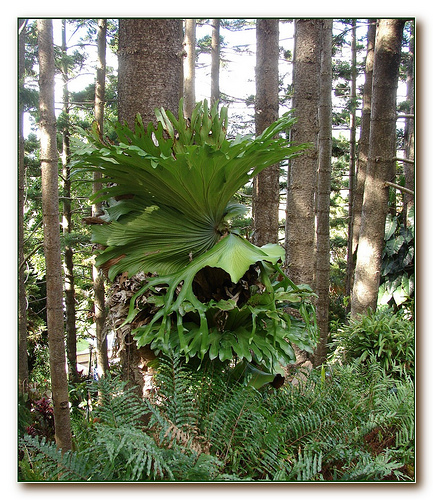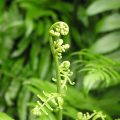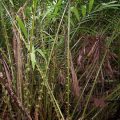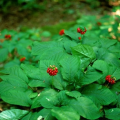The forest ecosystem is naturally high in biodiversity. However, when locals clear forests to build homes and convert them to agricultural land for high-value crops, many life forms are lost forever while others become endangered. Unlike animals, plants are basically defenseless when people begin stripping the natural plant cover and transform them into farms. The same fate happens to ferns or pteridophytes.

Because of this, collecting fern samples from the wild and cultivating them in a garden become necessary to save ferns from extinction.
Towards this goal, researchers from the Central Mindanao University (CMU) developed a protocol for saving endangered and endemic ferns. The protocol serves as a guide on effective conservation and promotion of information related to these valuable plants. The protocol includes the proper collection from the wild, holding and acclimatization of the collected plants, propagation, and proper care and management of the fern garden (pteridogarden).
Collection from the wild
After collecting the wildlings, they are balled and wrapped with mosses to protect the root hairs and the entire root system. Damaged root hairs prevent water absorption from the soil. Old leaves must be cut to reduce water loss and prevent wilting.
The moss-wrapped wildlings are put in a zip-lock or cellophane bag. The plant body, especially the root system, is moistened and locked tightly. Placing the wildling in a plastic bag will lessen chances of wilting and protect the root system from unnecessary movement.
The zip-lock/cellophane bags containing collected wildlings are placed in a big plastic bag and then put in a big sack. This will preserve moisture and further avoid stress and drying of the wildlings.
Acclimatization
Acclimatization refers to the adaptation to new conditions including temperature, altitude or environment. To help adapt to new conditions, the moss-wrapped fern wildlings are transferred to a pot with mixed garden soil and vermin cast, which adds fertility to the soil.
Fern wildlings are arranged in enclosed improvised clonal chambers. These plastic chambers maintain the desirable temperature, simulate conditions in the wild, and prevent direct sunlight exposure. Plants are watered daily to maintain the water needed by the ferns.
Observe the plants until old leaves are formed. These old leaves are good sources of planting materials.
Propagation
Propagation of some fern species can either be by leaf cutting or spores. Leaf cuttings and spores are collected from existing ferns.
Selaginella magnifica Warb. is a Mindanao-endemic pteridophyte species classified by the Department of Environment and Natural Resources (DENR) as vulnerable (DENR AO 2007-01). This species is propagated by leaf cutting.
To grow S. magnifica, the first thing to do is to remove old leaves from existing ferns and plant them in a pot with mixture of garden soil and vermincast. Using old leaves helps faster root formation.
The newly planted leaves are then placed inside improvised clonal chamber which must be watered everyday.
The propagated plants are then transferred from the growth chamber to an open area of the fernery (pteridogarden), which is shielded with net roofing.
Meanwhile, the critically endangered and endemic giant staghorn fern can be grown through spores.
Platycerium grande (Fee) Presl. is commonly known as ‘kapa de leon’, ‘dapong repolyo’, and ‘giant staghorn fern.’ It is endemic in Mindanao, highly priced, and categorized as critically endangered.
Due to over-harvesting and difficulty of the spores to germinate under natural conditions, this fern may become extinct if no conservation measures are adopted. One of the ways to prevent extinction of this species is by spore culture.
For the giant staghorn fern to reproduce, the frond with mature spores is placed in a paper envelope. Seal the paper envelope and crush the contents to allow spores to settle at the bottom. Collect the spores and sieve to separate from the trash.
Sow spores in a medium composed of sterilized, crushed tree fern trunks using a dropper. Then, subject culture plates to continuous illumination maintained at 24-25 oC.
It is important to monitor spore germination, gametophytes (prothalli) and sporophytes (plantlets) development in spore culture containers.
After two months, transfer plantlets from spore culture container to wire baskets with chopped tree fern trunk. Later on, transfer plantlets from wire basket to small clay pots and cover with cellophane bags and apply mist thrice a week. Lastly, transfer potted plantlets to tree fern slabs and tie.
With this method, the extinction of endangered ferns is avoided and the domestication of several fern species that have beneficial use to humans such as food, ornamentals, medicinal, etc, is promoted.
Furthermore, this conservation technique is expected to enhance knowledge on fern diversity and ecology since the pteridogarden is made easily accessible to students, researchers and fern hobbyists alike.
The research and development initiative on the protocol to save endangered and endemic ferns is one of the initiatives supported by the Council and the Department of Science and Technology to maximize science and technology potentials to attain sustained growth. This is in keeping with the Council’s goal of providing science-based know-how and tools that will enable the agricultural sector to raise productivity to world-class standards in connection with DOST’s Outcome One.
PCAARRD’s commitment to Outcome One will be showcased by the Council in its participation to the National Science and Technology Week (NSTW) on July 24-28 at SMX Mall of Asia, Pasay City.
“Outcome One serves as DOST’s blueprint towards alleviating poverty in the agriculture and aquatic sectors as part of the government’s social contract with our people,” said DOST Secretary Mario G. Montejo in his message during one of the events of the Council.
The 2015 NSTW adopts the theme Philippines: A Science Nation Innovating for Global competitiveness.
PCAARRD, on the other hand, adopts the theme Strategic Industry S&T Program for Agri-Aqua Growth (SIPAG) ni Juan to bolster PCAARRD’s commitment to Outcome One which the Council pursues, through its Industry Strategic S&T Program, hence the tagline SIPAG ni Juan.
by Victor B. Amoroso, Fulgent P. Coritico and Niko Niño G. Briones, Central Mindanao University (CMU), Maramag, Bukidnon






